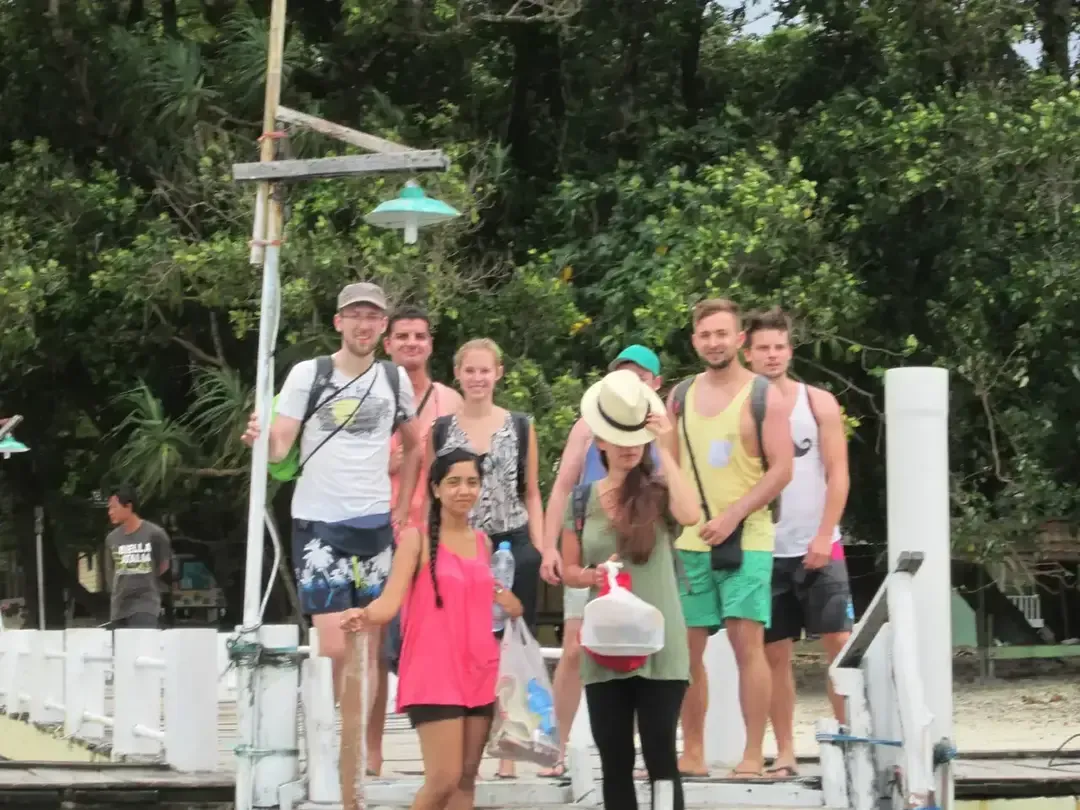Introduction: Why Ujung Kulon Matters
Ecotourism Development in Ujung Kulon National Park: Conserving a Global Treasure While Empowering Local Communities. Ujung Kulon National Park (UKNP), at the extreme southwestern tip of Java, is one of Indonesia’s most important conservation landscapes.
It holds the largest remaining block of lowland rainforest on Java, a mosaic of coastal habitat and offshore islands, and is the last refuge of the critically endangered Javan rhinoceros. Its global importance is recognized by UNESCO, and its ecological values make it both a conservation priority and an ecotourism opportunity. UNESCO World Heritage Centre.

Ujung Kulon National Park, located at the southwestern tip of Java, Indonesia, is a UNESCO World Heritage Site and one of the country’s most important protected areas. Famous as the last refuge of the critically endangered Javan rhinoceros, the park also boasts pristine lowland rainforests, coral reefs, mangroves, and small offshore islands.
As global interest in sustainable travel and ecotourism in Indonesia continues to rise, Ujung Kulon presents a unique opportunity: protecting endangered species while empowering local communities through responsible tourism development.
This article explores how ecotourism in Ujung Kulon National Park can balance conservation goals, community livelihoods, and visitor experiences.
Guiding principles for ecotourism in Ujung Kulon
Effective ecotourism here must follow core sustainability principles:
- Conservation-first design. Visitor activities must never compromise critical rhino habitat or other sensitive zones. Tourism zones should be mapped and restricted using scientific data.
worldheritageoutlook.iucn.org - Community benefit and stewardship. Local people must gain tangible, transparent benefits (jobs, enterprise opportunities, revenue shares) so they become active stewards rather than competitors for resources. Research in the region has highlighted both potential and gaps in community inclusion.
- Low-impact, high-value experiences. Focus on small-group, interpretive visits (e.g., guided mangrove walks, boat-based reef viewing, cultural homestays) that charge appropriate fees and limit visitor numbers to reduce footprint.
- Science-informed management. Monitor wildlife, habitat conditions, and tourism impacts — adaptively managing access based on data (e.g., camera traps, ranger patrol records). Partnerships with conservation NGOs and universities are essential.
Practical components of an ecotourism strategy
- Zoning and access controls. Identify core protection areas (especially rhino habitat) where tourism is either prohibited or strictly regulated, and buffer/visitor zones where guided activities can occur. Permit systems, quotas, and mandatory guides reduce disturbance and provide revenue for enforcement.
Ujung Kulon National Park - Community-based tourism enterprises. Build local capacities for homestays, guiding, boat operations, handicrafts, and food services. Revenue-sharing agreements and training (language, hospitality, conservation interpretation) create incentives for protection and diversify incomes away from extractive activities. Field studies show community inclusion is critical for sustainability but often under-emphasized in planning.
- Ranger and anti-poaching support funded through tourism. A portion of tourism fees can finance ranger patrols, camera traps, and rapid-response units. Given the ongoing poaching threat, strengthening law enforcement is a non-negotiable part of any ecotourism plan. Recent arrests in anti-poaching operations demonstrate both the threat and the need for sustained resources.
- Interpretation and environmental education. Equip guides with science-based materials and develop visitor centers or mobile exhibits to explain Ujung Kulon’s ecosystems, the story of the Javan rhino, and responsible visitor behavior. Education increases visitor willingness to pay for conservation and creates advocates.
- Low-impact infrastructure. Build eco-lodges, boardwalks, and mooring systems designed to minimize erosion, runoff, and habitat fragmentation. Use renewable energy and waste management systems so tourism doesn’t become an additional burden on the park.
- Diversification of ecotourism products. Beyond rhino-oriented messaging (which must be careful not to encourage disturbance), develop marine ecotourism (snorkeling at non-sensitive reefs), birdwatching, cultural tours, and citizen-science programs (e.g., biodiversity surveys) to distribute visitor pressure and broaden market appeal.
Governance, partnerships and funding
Success depends on multi-stakeholder governance: the Ministry of Environment and Forestry (park authority), local governments, village councils, NGOs (national and international), academics, and responsible tour operators.
Funding can come from entrance fees, conservation trust funds, NGO grants, and impact investment in sustainable tourism enterprises. Models that channel predictable revenues to both conservation and community development produce the strongest long-term buy-in.
Challenges and risks
- Poaching and organized crime. Illegal hunting for rhino horns and other wildlife remains the gravest threat; tourism revenues must not give a false sense of security without robust law enforcement. Recent arrests and investigations into killings highlight ongoing vulnerability.
- Natural disasters and invasive species. Tsunamis, volcanic events, or outbreaks of invasive plants can rapidly alter habitat suitability for rhinos and other species, requiring ecological restoration efforts that tourism alone cannot fund.
- Poorly managed tourism. Overcrowding, unregulated boat traffic, and inappropriate development risk degrading the same values visitors come to see. Maintaining strict capacity limits and adaptive management is essential.
Measuring success — indicators to monitor
To ensure ecotourism supports conservation and communities, track indicators such as: population trends of key species (Javan rhino indices from camera trap data), incidence of poaching or illegal activity, household income changes in adjacent villages, visitor satisfaction and compliance rates, and ecological metrics (reef health, forest cover). Transparent reporting builds trust with donors and tourists.
Conclusion
Ujung Kulon National Park offers a rare chance to align global conservation goals — most critically the survival of the Javan rhinoceros — with local sustainable development through carefully designed ecotourism.
The pathway is not simple: it requires strict protection of core habitats, science-driven zoning, meaningful community partnerships, continued investment in law enforcement, and tourism products that are low-impact but high-value.
Done well, ecotourism can finance protection, provide livelihoods that reduce pressures on nature, and cultivate global stewards for one of Java’s most extraordinary wild places. International and national partners, supported by well-regulated visitor engagement, can help ensure Ujung Kulon remains both a sanctuary for rare species and a model for conservation-minded tourism.
